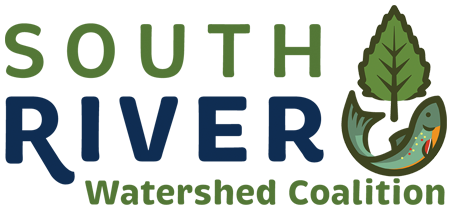
Safeguarding an entire watershed requires collective action. The South River Watershed Coalition mobilizes communities and businesses in the Shenandoah Valley to better understand the vital nature of our South River and take action to protect it. Join us in improving awareness of the interconnectivity of our environment and the benefits of restoring and protecting the South River watershed.
Mission
Conserve the South River Watershed to ensure healthy communities and a sustainable economic resource for generations to come. We want to preserve our water way of life by:
- Protecting the watershed to ensure the health of the South River for future generations.
- Engaging the community to inspire collective and individual action that positively impacts the South River
- Convening watershed groups and stakeholders to learn about different perspectives and foster collaboration and information sharing.
- Sharing the recreational opportunities on the South River and the role of recreation as an economic driver for the region.
- Working with other environmental conservation organizations to facilitate ecological conservation and watershed-conscious practices.
Historic Timeline
1929
DuPont acquires 153 acres in Waynesboro, Virginia as a manufacturing site for Rayon, the world’s first synthetic fiber. Mercury was used in Rayon production.
1929 - 1939
Despite the depression era, demand for Rayon increases and the DuPont plant expands.
1950
Rayon production continues, but mercury is no longer used.
1976
DuPont discovers mercury in soil on the plant site during construction activities and initiates studies to determine potential river impacts, marking the first collaborative effort between DuPont, regulatory agencies, academia and stakeholders.
1977
The Virginia Department of Health institutes a fish consumption ban from Waynesboro to Front Royal that includes the South River, South Fork Shenandoah River, and part of the Shenandoah River.
1980
The fish consumption ban is replaced by a consumption advisory.
1982
Results of an evaluation predict a natural decline in fish tissue mercury. Natural recovery is expected, and monitoring is selected as the remedy.
1982
DuPont funds a 100-year monitoring program for fish, water, soil, and sediment in the South River and South Fork Shenandoah River.
1985
Various state agencies begin to work together to implement the monitoring program. Fish tissue data are collected to verify that the consumption advisories are appropriate.
1998
The Virginia Department of Environmental Quality takes the lead in implementing the monitoring program.
1999
An evaluation of the monitoring program data indicates that fish tissue mercury levels are not declining as predicted.
2000
The Virginia Department of Environmental Quality and DuPont agree to the concept of a South River Science Team, a collaborative effort to evaluate the mercury situation.
2001
The South River Science Team holds its first meeting. Representatives from DuPont, the Virginia Department of Environmental Quality, the Virginia Department of Health, and the Virginia Department of Game and Inland Fisheries (now the Department of Wildlife Conservation) participated in the inaugural meeting.
2002
The South River Science Team expands to include citizens’ groups, environmental groups and academic experts.
2005
DuPont, in coordination with the South River Science Team, begins a six-year ecological study of the South River and South Fork Shenandoah River.
2006
The South River Science Team opens an information center and a field office on Main Street in downtown Waynesboro.
2008
Evidence indicates that some of the mercury released long ago bound to soil particles in the river and then ended up being deposited on riverbanks along the South River. Today, when this riverbank soil erodes, mercury goes back into the river with it.
2009
The South River Science Team tests a remediation approach. An eroding riverbank in the City of Waynesboro (Pilot Bank) is stabilized to measure the changes, if any, that might occur when riverbank erosion is reduced or stopped.
2011 - 2012
Results from the Pilot Bank show that the stabilization approach is successful in controlling mercury releases to the river. As a result, riverbank stabilization is considered a feasible remediation option.
2013
DuPont, with input from a South River Science Team Task Team, submits a remediation proposal that addresses select eroding riverbanks that have been identified as the major potential continuing source of mercury to the rivers.
2014
DuPont collects a variety of samples to establish baseline conditions in the South River and South Fork Shenandoah River, enabling the South River Science Team to compare conditions in the rivers before, during and after remediation.
2016
As part of its first phase of work, DuPont begins remediating and restoring additional riverbanks with elevated soil mercury levels.
2017
The Constitution Park riverbank remediation and restoration are complete.
2017
An approximately $50 million settlement is reached between DuPont and the state and federal government to resolve claims stemming from mercury releases from the former DuPont Waynesboro plant.
2018
The remediation of riverbanks at City Shops and Allied Ready Mix is complete.
2019
The remediation and restoration of riverbanks near Shiloh Baptist Church are complete.
2020
The in-person South River Watershed Summit is canceled because of the pandemic. With input from the Remediation Advisory Panel, the planning team begins creating outreach videos until large gatherings can resume.
2020
The remediation and restoration of riverbanks at North Park are conducted in accordance with pandemic health and safety protocols. The work is completed on time and safely.
2021
The first four installments of the video series South River Currents are shared with the community. With remediation complete, the focus shifts from mercury cleanup to watershed health.
2022
The South River Watershed Coalition is formed to inspire and facilitate collective and individual action to protect our watershed.
